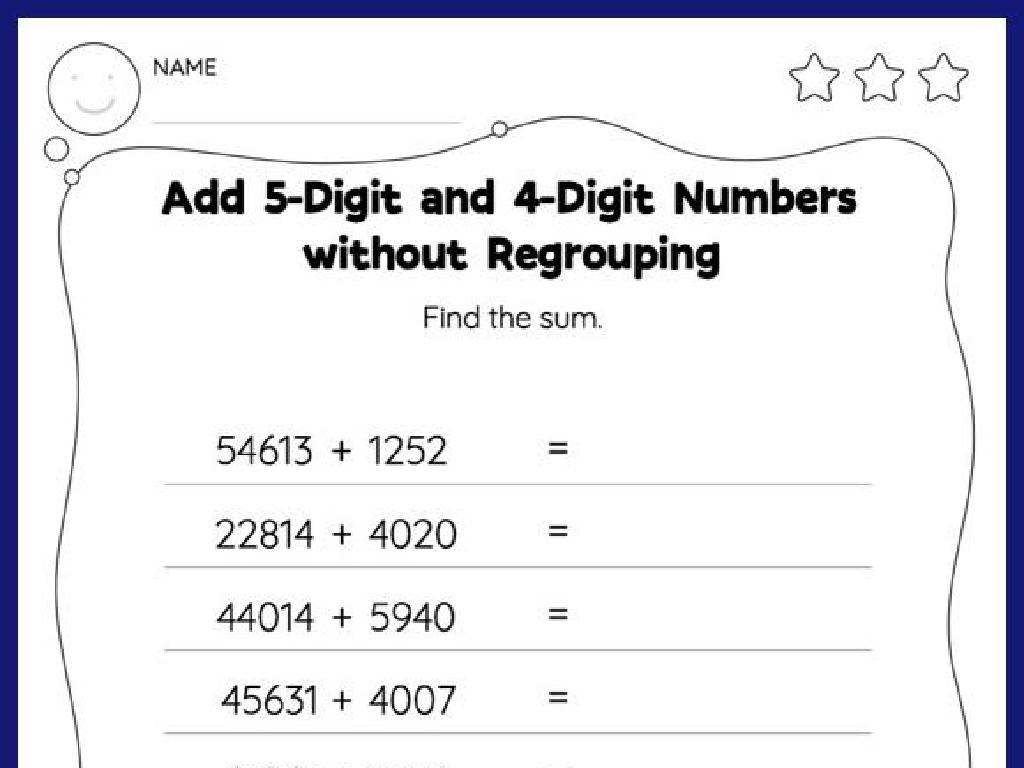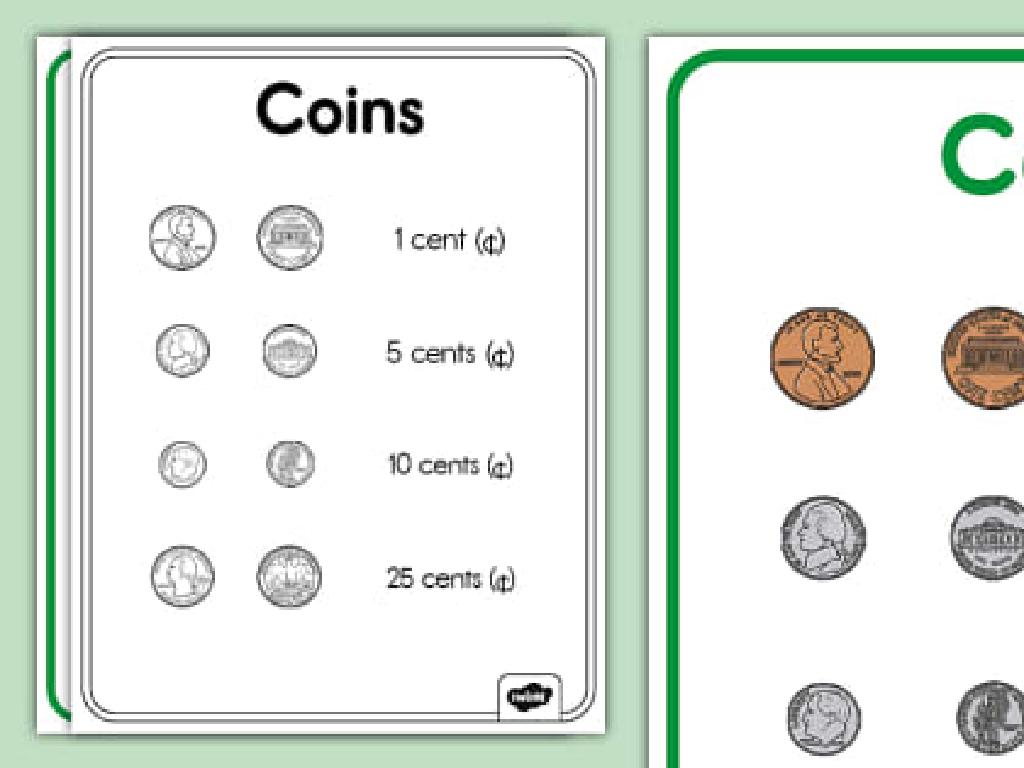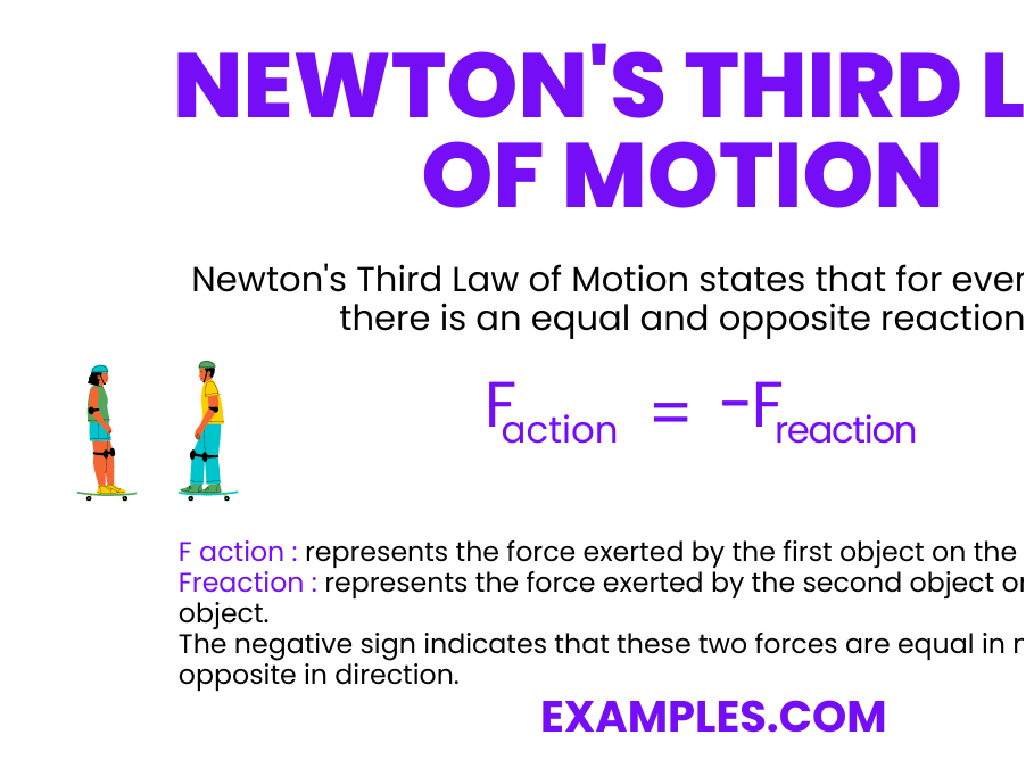Which Bar Graph Is Correct?
Subject: Math
Grade: First grade
Topic: Data And Graphs
Summary: This first grade math lesson introduces students to bar graphs, teaching them how to read, interpret, and select the correct bar graph for given data. Through engaging examples and hands-on activities, students learn about graph components like titles, labels, and categories, as well as the importance of bar height. Practice opportunities include creating their own bar graphs and comparing graphs with data, building foundational skills in data analysis and visual representation.
Please LOG IN to download the presentation. Access is available to registered users only.
View More Content
Understanding Bar Graphs
– What is a bar graph?
– A bar graph uses bars to show numbers or amounts.
– Parts of a bar graph
– Title, labels, bars, and numbers are parts of a bar graph.
– Reading bar graph examples
– Look at the height of bars to see how many or how much.
– Choosing the correct graph
– We’ll practice picking the right graph for given data.
|
This slide introduces first graders to the concept of bar graphs, an important part of understanding data and graphs. Begin by explaining what a bar graph is and how it visually represents information with bars of different heights or lengths. Discuss the key components of a bar graph, including the title, labels, bars, and numbers that represent data. Show examples of simple bar graphs and guide students on how to read them by comparing the heights of the bars. Finally, engage the students with activities where they choose the correct bar graph that matches a set of data, reinforcing their understanding of how to interpret and select appropriate graphical representations.
Understanding Bar Graphs
– What is a bar graph?
– A picture with bars to show numbers or amounts
– Bars show information
– Taller or shorter bars can mean more or less of something
– Compare things easily
– See which group has more or less by looking at bar height
– Bar graphs in real life
– Like how many apples or oranges are in the basket
|
This slide introduces first graders to the concept of bar graphs. Explain that a bar graph is a way to show information using bars of different heights or lengths. It’s like drawing sticks to represent how much or how many of something we have. The taller the bar, the more there is of that item. Use relatable examples, such as comparing the number of apples to oranges in a basket, to help them understand how bar graphs can be used to compare different groups. Encourage the students to think of bar graphs as a fun way to see which items or groups have more or less of something.
Parts of a Bar Graph
– Graph Title: What’s the graph for?
– Like the name of a story, it tells us the topic of the graph.
– Categories: Groups we compare
– These are the different things we look at, like types of fruits or colors.
– Bars: Show value for each group
– Each bar stands for a group and how much or many.
– Bar Height: Represents numbers
– The taller the bar, the bigger the number it stands for.
|
This slide introduces the basic components of a bar graph to first-grade students. Emphasize that the title of the graph is like the title of a story; it tells us what information the graph will give us. Explain that categories are the different things we are looking at or comparing, such as different kinds of pets or different colors. The bars represent the amount or value for each category, and the height of each bar shows how many or how much of something there is. Use simple and relatable examples, such as comparing the number of apples and bananas in a fruit basket, to help students understand how to read bar graphs. Encourage students to ask questions about the parts of the graph and to think of their own examples.
Reading a Bar Graph Correctly
– Understand the graph’s title
– The title tells us what information the graph is about.
– Check the bottom categories
– Categories show what each bar represents.
– Observe the height of the bars
– Taller bars mean higher values.
– Match bar height to value
– Numbers on the side help us see how much each bar is worth.
|
This slide is aimed at teaching first graders how to read a bar graph. Start by explaining that the title of the graph gives us an idea of what kind of information we will find. Then, show them how to look at the categories listed at the bottom of the graph, which tell us what each bar stands for. Next, guide them to observe the height of each bar and explain that the height shows how much or how many. Finally, help them understand how to use the numbers on the side of the graph to determine the exact value of each bar. Use simple and relatable examples, such as a bar graph showing the number of apples or toys, to make the concept clear. Encourage the students to ask questions if they’re unsure about how to read the graph.
Choosing the Correct Bar Graph
– Understanding bar graphs
– A bar graph uses bars to show numbers
– Data can be shown in graphs
– We see which graph matches our numbers
– Examples help us learn
– Look at bar heights to find answers
– Practice picking right graph
– We’ll try with fun examples in class
|
This slide introduces first graders to the concept of selecting the appropriate bar graph that corresponds to a given set of data. Begin by explaining what a bar graph is and how it represents information with bars of different heights. Emphasize that the length or height of the bar is related to the amount of the item or number it represents. Show them simple examples of bar graphs and ask them to match the graphs with the correct set of data. Use clear and relatable examples, such as the number of apples or the number of sunny days in a week. Encourage the students to explain why they think a particular graph is the correct representation of the data. This will help them understand the importance of accuracy in data representation and improve their analytical skills.
Choosing the Correct Bar Graph
– Two bar graphs to compare
– Only one graph is correct
– Match graphs with the data
– Look at numbers and pictures on each graph
– Find the right bar graph
– We’ll check which graph matches our data list
|
This slide is designed to help first-grade students understand that bar graphs represent data visually and that it’s important to choose the correct graph that matches the given data. Start by showing two different bar graphs to the class. Explain that although both graphs might look similar, only one represents the data accurately. Guide the students to compare the height of the bars and the labels with the data provided. Encourage them to ask questions about the differences they observe. The activity will help them practice critical thinking and attention to detail, which are essential skills in interpreting data. For the activity, provide a simple data set and two bar graphs, and ask the students to work in pairs to discuss and decide which graph is correct. Offer stickers or small rewards for correct answers to motivate participation.
Activity Time: Create Your Own Bar Graph!
– It’s your turn to make a graph
– Use stickers for the bar graph
– Each sticker represents an item or number
– Place stickers on the worksheet
– Make sure to align them carefully
– Have fun creating your graph!
|
This activity is designed to give students a hands-on experience with bar graphs. Provide them with a worksheet that has a blank bar graph template and a set of colorful stickers. Explain that each sticker represents one item or number, and they should place the stickers above the correct category on the graph. Guide them to align the stickers in even rows to clearly represent the data. Encourage creativity and ensure they understand the concept of representing data visually. After completing the graph, ask students to explain what their graph shows. This will help reinforce their understanding of bar graphs and how to interpret them.
Class Activity: Find the Correct Graph
– Review the data with your group
– Choose the correct bar graph
– Discuss why it’s the right graph
– Did the graph match the data? How did you decide?
– Share your choice with the class
|
This activity is designed to help students understand how to interpret data and represent it using a bar graph. Divide the class into small groups and provide each group with a dataset and several bar graphs. Only one graph correctly represents the data. Students must work together to identify the correct graph and be prepared to explain their reasoning. As a teacher, facilitate the discussion by asking guiding questions about the data and the characteristics of the graphs. Possible activities include having different datasets for each group, using candy or stickers for data points, or creating a graph as a class after each group presents their findings. The goal is for students to practice data interpretation and to understand that graphs are a visual representation of data.
Bar Graphs: Understanding Our Data
– Congratulations on learning bar graphs!
– Bar graphs make comparison easier
– They show data as bars for quick comparison
– They turn numbers into pictures
– Each bar’s height shows how many or how much
– Let’s remember how to read them
– We look at the height of bars to read the data
|
This slide is a conclusion to the lesson on bar graphs. It’s meant to reinforce the students’ understanding of how bar graphs help us visualize numerical data by turning numbers into a picture that we can easily compare. Emphasize the importance of bar height in representing quantity and encourage the students to remember that bar graphs are a tool to make data easier to understand. You can ask the students to reflect on what they’ve learned by asking them to explain why bar graphs are useful or to come up with their own examples of when a bar graph could help them in their daily lives.





